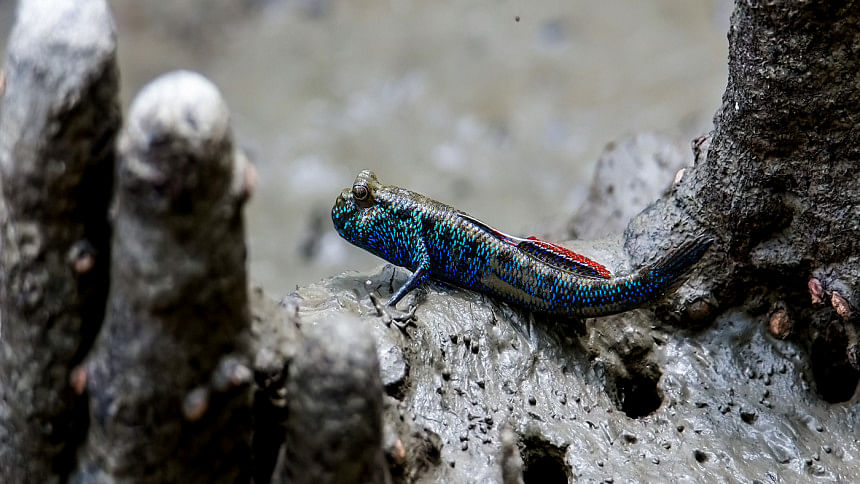The fish out of water

A male Periophthalmodon septemradiatus, one of the 25 species of mudskippers, was recently seen roaming the mudflats of the Sundarbans.
Found in muddy swamps and rivers along tropical and subtropical regions of Africa, Australia and Asia, this fish prefers land over water. As a matter of fact, prolonged stay in the water can even cause it to drown!

This particular species is also the only one known to communicate acoustically when out of water, and if alarmed, it prefers running onto land than into water.
While the mudskipper's eyes are unusual -- protruding out of its head unlike other fish – its most interesting feature is the side pectoral fins, which it uses as limbs to crawl or even "skip".

It's also more active on land, where it feeds on crabs, insects, snails and whatever the mud offers, and interacts with others of its own kind. It's able to breathe on land using the water trapped inside the gill chambers, while it can also absorb oxygen through the lining of its mouth and throat, allowing it to stay out of water for long. As a matter of fact, this amphibious fish ends up spending three-quarters of its life on land.

 For all latest news, follow The Daily Star's Google News channel.
For all latest news, follow The Daily Star's Google News channel. 



Comments